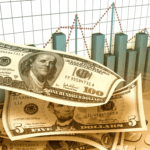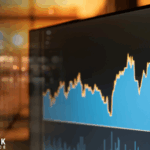Consumer spending patterns in the United States remain steady according to recent financial insights from two leading banks. Despite the economic turbulence and inflationary pressures, Americans continue to spend, suggesting resilience in personal finance behavior. This stability could potentially ease worries among investors concerning the pressures of high borrowing costs and the looming possibility of an economic downturn.
Reports from the past have often highlighted consumer spending as a critical barometer for economic health. Earlier evaluations underscored the influence of post-pandemic behaviors, where an increase in travel and dining was noted as consumers sought normalcy. Current patterns suggest a shift back to pre-pandemic norms. However, ongoing economic challenges, such as inflation, continue to impact lower-income groups more significantly, reflecting a disparity in financial resilience among different demographics.
Are Consumers Still Spending?
Executives from JPMorgan and Wells Fargo have provided insights into current consumer spending trends. Jeremy Barnum, JPMorgan’s CFO, remarked that typical spending patterns have resumed after the initial surge in travel and entertainment post-COVID-19. He mentioned that consumer habits align with a stable labor market and suggest a “no-landing” economic scenario.
How Are Lower-Income Groups Affected?
Wells Fargo’s finance chief, Michael Santomassimo, noted that although there is a slight decrease in credit and debit card usage compared to earlier in the year, spending remains robust. CEO Charlie Scharf expressed that while overall consumer health hasn’t deteriorated, there is noticeable stress among individuals with lower income, attributing this to persistent inflation offsetting wage growth.
The Bureau of Labor Statistics’ recent Consumer Price Index data highlights continuing financial pressures, particularly in food and housing costs. These essential expenditures have grown significantly, consuming a large part of the income for those earning less than $50,000 annually. This presents a stark contrast to higher-income households, for whom these costs are less burdensome.
Looking ahead, as inflation begins to slow and interest rates potentially ease, there could be some relief for consumers, especially for those on the lower end of the income spectrum. Financial institutions and policymakers will need to continue monitoring these trends to gauge the broader economic impact.
Observations from major banks suggest that while consumer spending is resilient, disparities exist in how different income levels cope with economic pressures. Monitoring these patterns is crucial for understanding the broader economic landscape, which remains influenced by various factors including inflation, interest rates, and employment levels.










